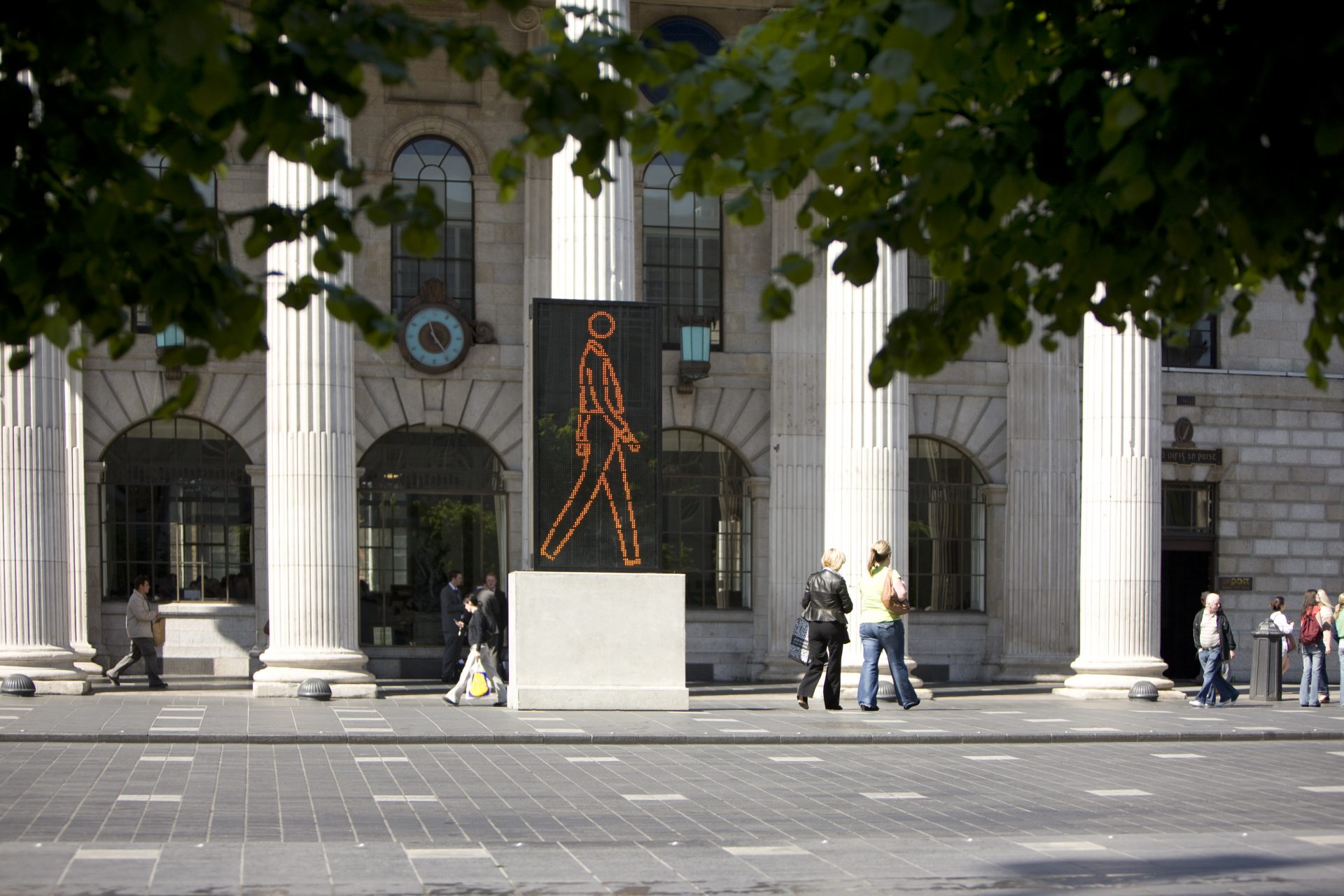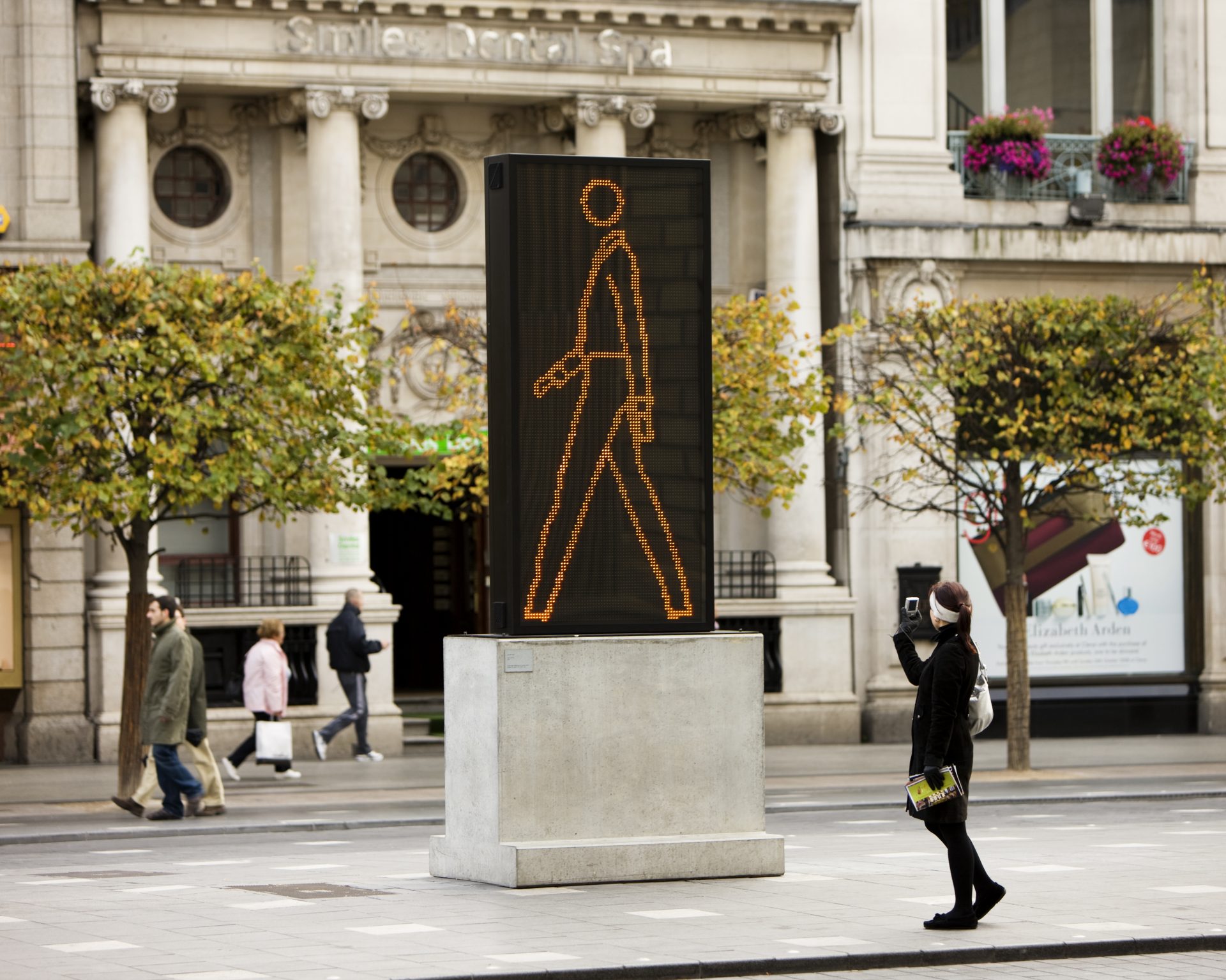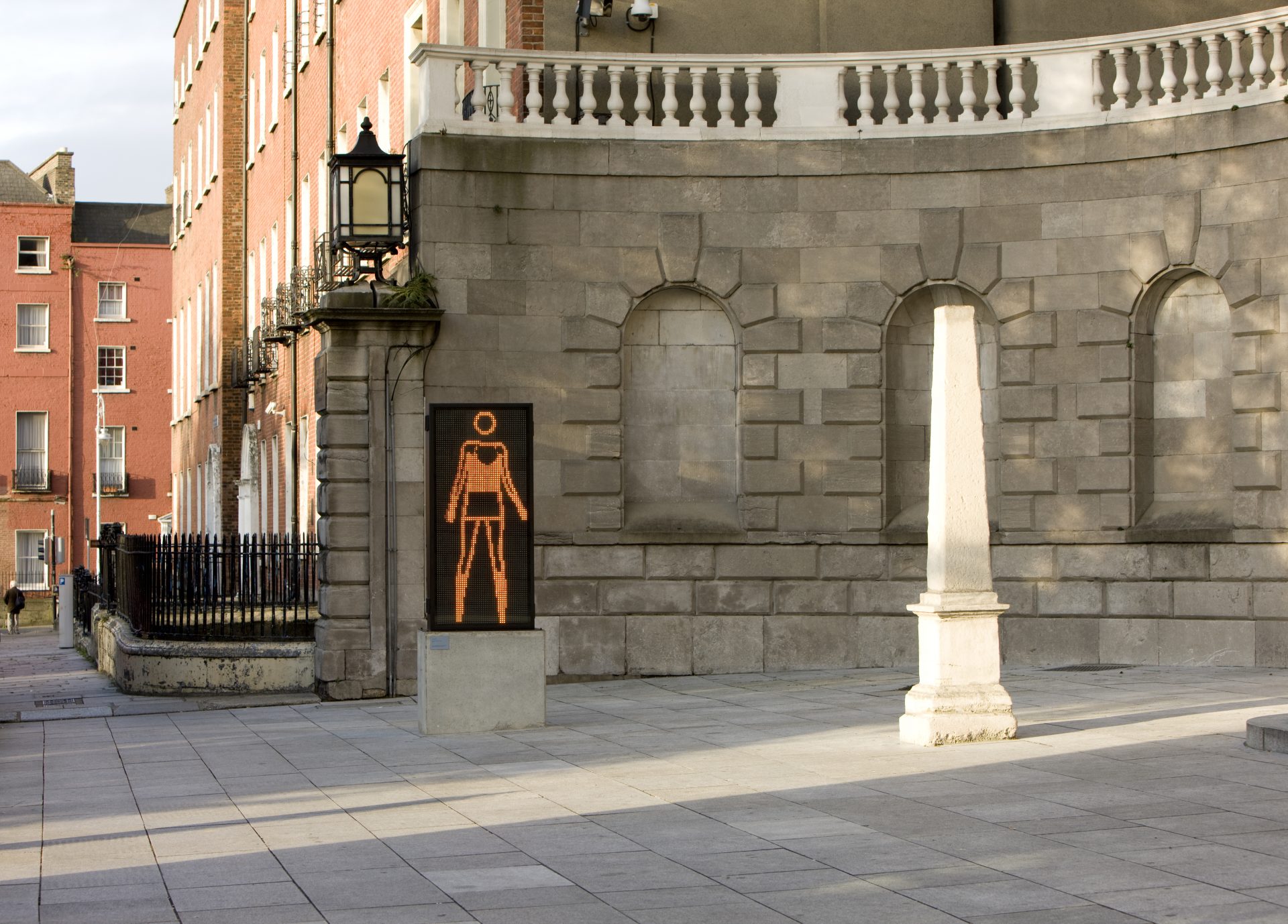Dublin City Gallery The Hugh Lane is delighted to present the first large-scale public exhibition of works by internationally renowned artist Julian Opie in Dublin. The exhibition entitled Julian Opie: Walking on O’Connell Street, curated by Barbara Dawson, comprises five animated LED installations on the central median of O’Connell Street and on the forecourt of the Gallery on Parnell Square.
The animations connect Dublin City Gallery The Hugh Lane, with its renowned collection of figurative art, to Dublin’s main street. Four of Opie’s animated figures – Sara, Julian, Jack and Suzanne – are displayed walking on O’Connell Street in the direction of Parnell Square where Sara dances outside the Gallery. While moving signs and images are familiar in city sights these works, inspired by popular culture, go beyond the obvious with a compelling contemporary aesthetic.
O’Connell Street is now another public platform for contemporary practice curated by Dublin City Gallery the Hugh Lane. Julian Opie: Walking on O’Connell Street follows on from the highly successful Barry Flanagan exhibition of giant bronze hares, which leapt up and down O’Connell Street in the summer of 2006. The Julian Opie installation will remain on display for the duration of the Gallery’s centenary celebrations.
Julian Opie is widely recognised as one of the pre-eminent artists working with public sculpture today. His images are elemental in appearance though amongst the most complex and sophisticated in contemporary art practice. His highly stylised work involves the reduction of photographs or short films into figurative reproductions. His unique portraiture is characterised by black outlines with flat areas of colour and details are reduced to his linear elemental style that captures the subject’s entire personality.
-
Profile
Julian Opie was born in London in 1958. He studied at Goldsmiths College, London, from 1979 to 1982. Opie uses urban and rural landscapes, as well as moving figures, to bring time-honoured artistic genres into the twenty-first century. His works have been realised in a variety of media including silkscreen, vinyl, LCD, LED, lenticular and flocking, and he continues to push the boundaries of ‘traditional’ artistic practice. He draws inspiration from both high art, design and the vernacular; lightbox advertising, billboard signs, Japanese Manga, seventeenth and eighteenth-century portraiture, nineteenth-century silhouettes, Roman busts and ancient Egyptian art.
In 2001 Opie was awarded Music Week CADS, Best Illustration award for his album cover design for Best of Blur. The instantly recognisable, universal language of his art is presented in private and public commissions all over the world including Narita Airport, Tokyo (2018); Tower 535, Causeway Bay, Hong Kong (2016); Arendt and Medernach, Luxembourg (2015); The Lindo Wing, St Mary’s Hospital, London (2012); Regent’s Place, London (2011); Seoul Square, South Korea (2009); and Hugh Lane Gallery (2008).
Opie has presented recent institutional exhibitions at Museu Coleção Berardo, Lisbon (2020); F1963, Busan (2018); National Portrait Gallery, London (2017); Suwon Ipark Museum, Suwon (2017); Fosun Foundation, Shanghai (2017); Fundacion Bancaja, Valencia (2017). His work can be found in public collections worldwide including Tate, London; British Museum, London; Victoria and Albert Museum, London; National Portrait Gallery, London; The Institut Valencià d’Art Modern; Essl Collection, Vienna; Stedelijk Museum, Amsterdam; Israel Museum, Jerusalem; Takamatsu City Museum of Art, Japan; Museum of Modern Art, New York; and Institute of Contemporary Arts, Boston.
Julian Opie lives and works in London.
- Related Materials














